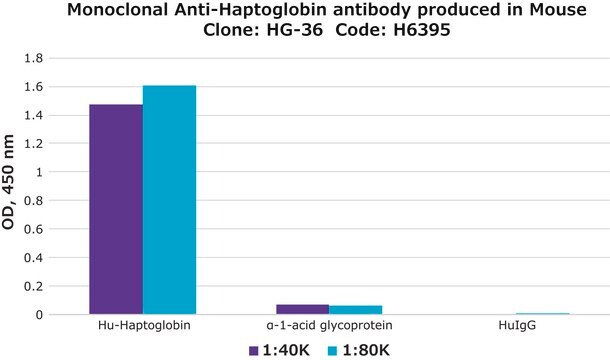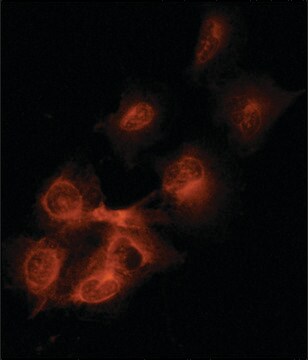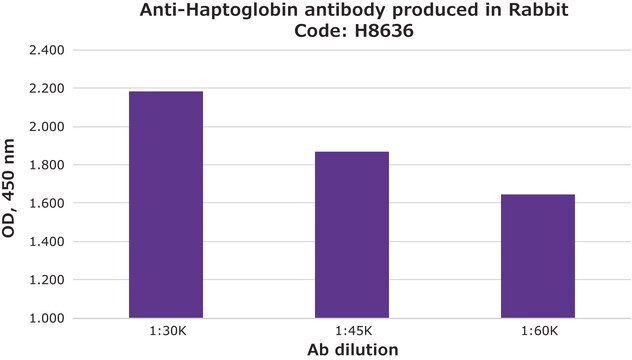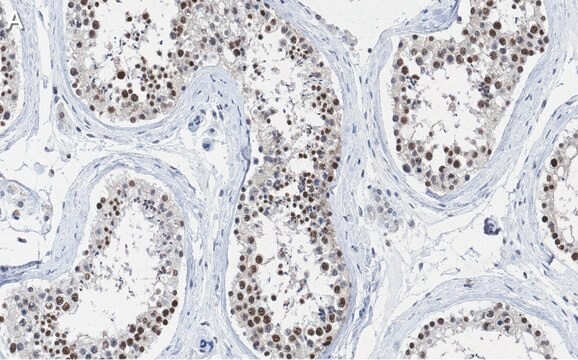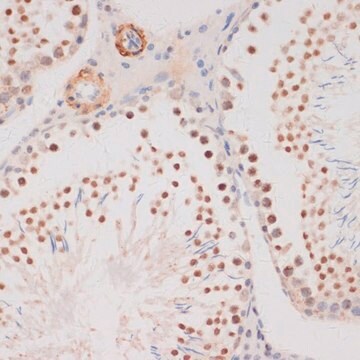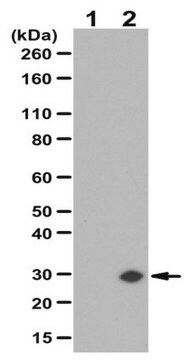SAB4200781
Anti-Haptoglobin antibody, Mouse monoclonal
clone HG-36, purified from hybridoma cell culture
Sinónimos:
Anti-HP, Anti-Zonulin
About This Item
Productos recomendados
origen biológico
mouse
Nivel de calidad
forma del anticuerpo
purified from hybridoma cell culture
tipo de anticuerpo
primary antibodies
clon
HG-36, monoclonal
Formulario
buffered aqueous solution
reactividad de especies
human
envase
antibody small pack of 25 μL
concentración
~1.0 mg/mL
técnicas
ELISA: 0.2-0.4 μg/mL using 10 μg/ml human haptoglobin for coating
dot blot: suitable
immunoblotting: suitable
immunoprecipitation (IP): suitable
isotipo
IgG1
Nº de acceso UniProt
Condiciones de envío
dry ice
temp. de almacenamiento
−20°C
modificación del objetivo postraduccional
unmodified
Información sobre el gen
human ... HP(3240)
Descripción general
Monoclonal Anti-Haptoglobin specifically recognizes the three types of human haptoglobin (types 1-1, 2-1, and 2-2) The antibody recognizes both purified and haptoglobin in human serum, and shows no crossreactivity with human IgG, transferrin, C-reactive protein, α-1-acid glycoprotein, albumin, hemoglobin, or bovine, goat and sheep serum haptoglobin.
Inmunógeno
Aplicación
Forma física
Otras notas
¿No encuentra el producto adecuado?
Pruebe nuestro Herramienta de selección de productos.
Código de clase de almacenamiento
12 - Non Combustible Liquids
Clase de riesgo para el agua (WGK)
WGK 1
Punto de inflamabilidad (°F)
Not applicable
Punto de inflamabilidad (°C)
Not applicable
Elija entre una de las versiones más recientes:
Certificados de análisis (COA)
¿No ve la versión correcta?
Si necesita una versión concreta, puede buscar un certificado específico por el número de lote.
¿Ya tiene este producto?
Encuentre la documentación para los productos que ha comprado recientemente en la Biblioteca de documentos.
Nuestro equipo de científicos tiene experiencia en todas las áreas de investigación: Ciencias de la vida, Ciencia de los materiales, Síntesis química, Cromatografía, Analítica y muchas otras.
Póngase en contacto con el Servicio técnico